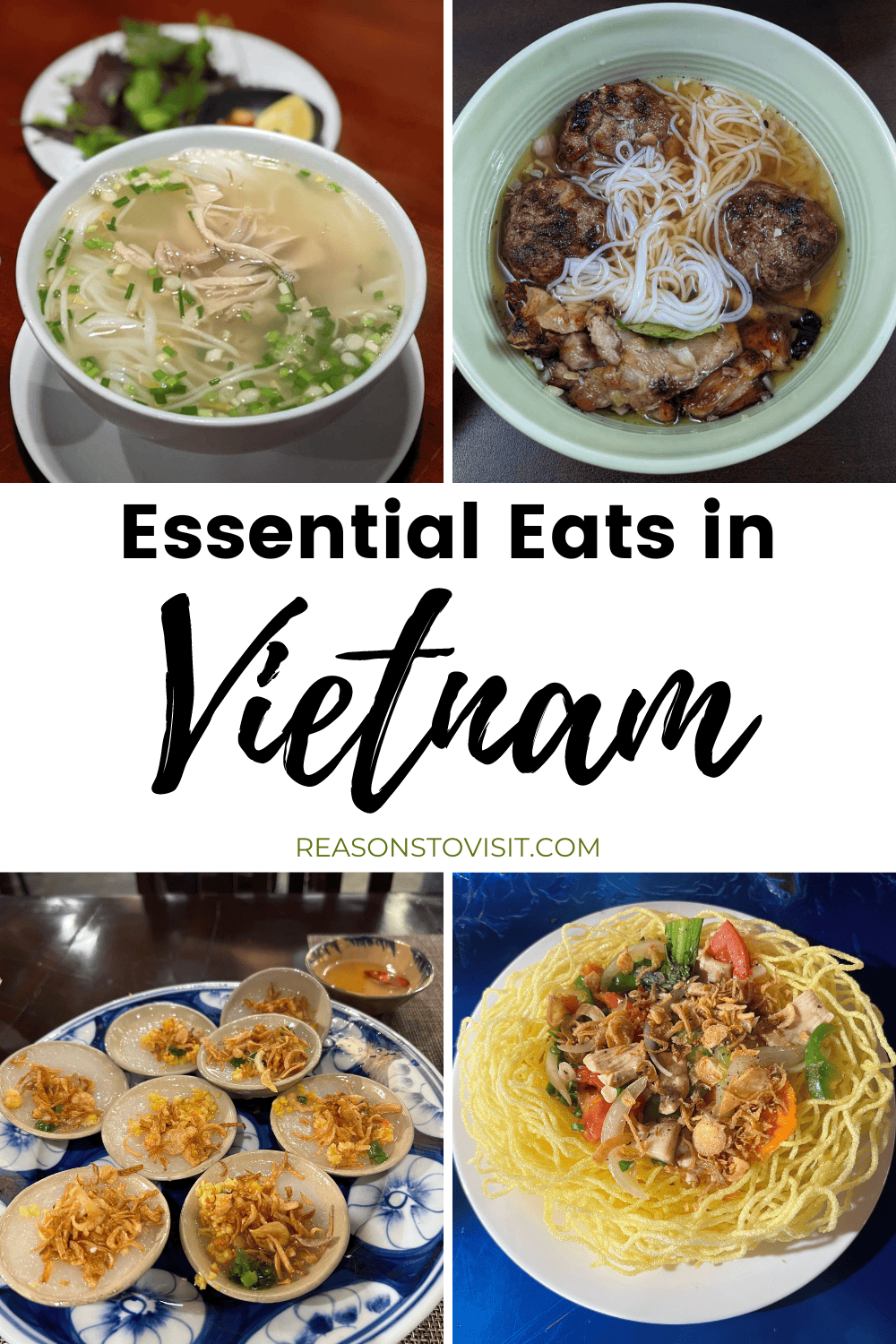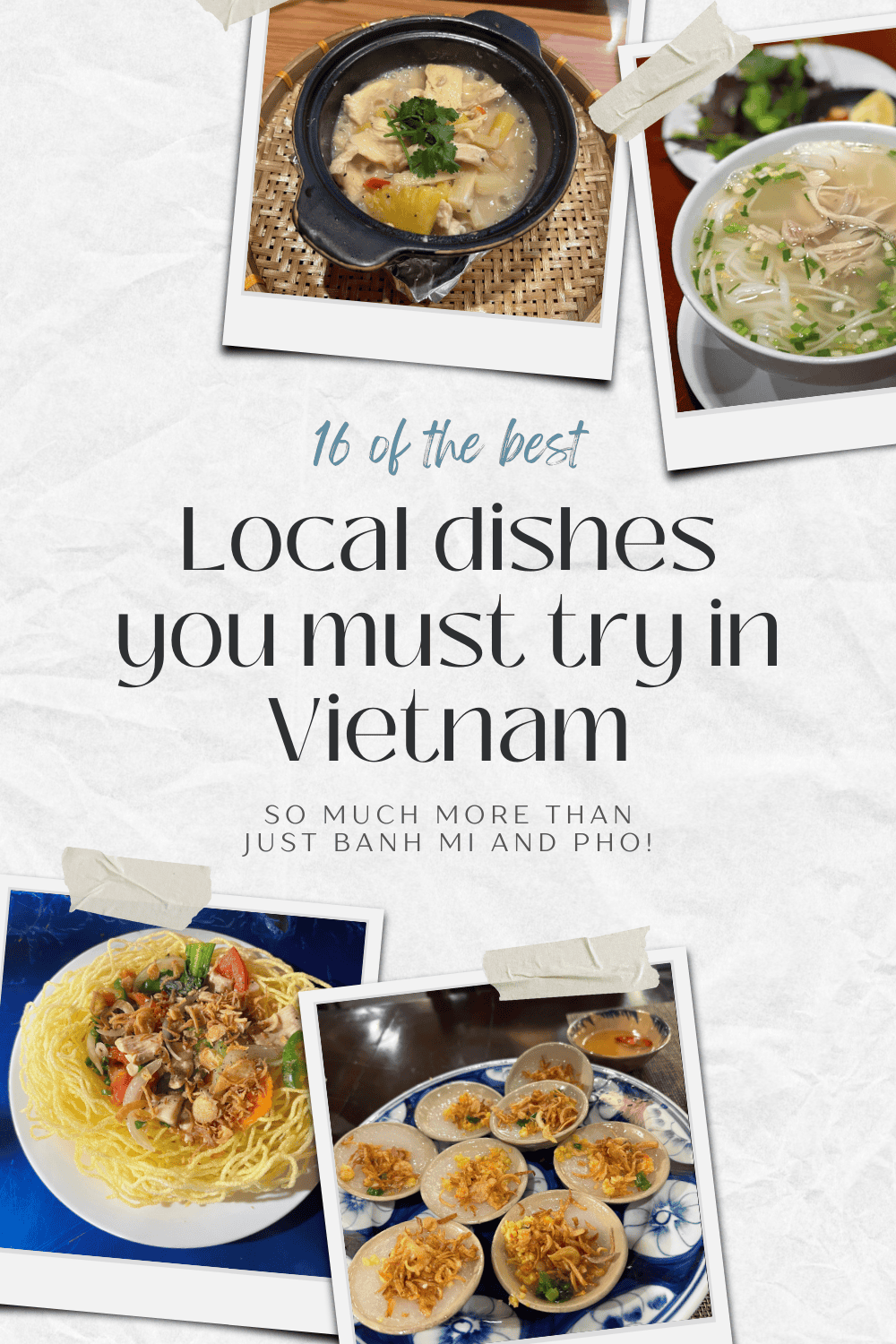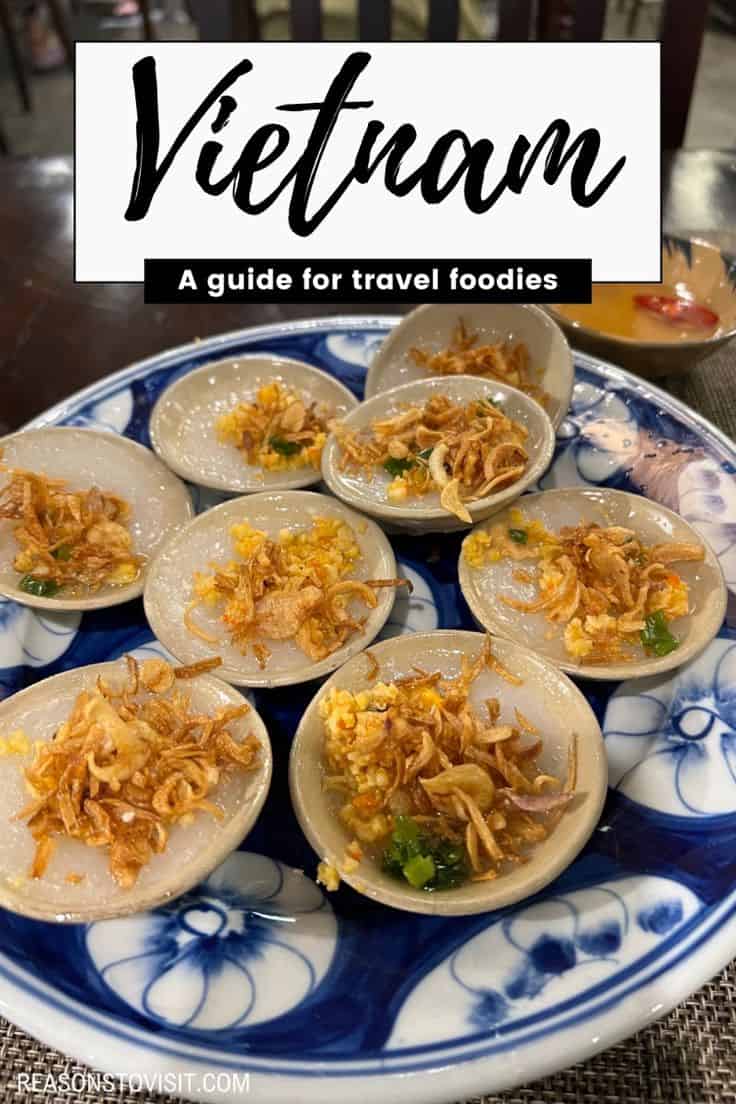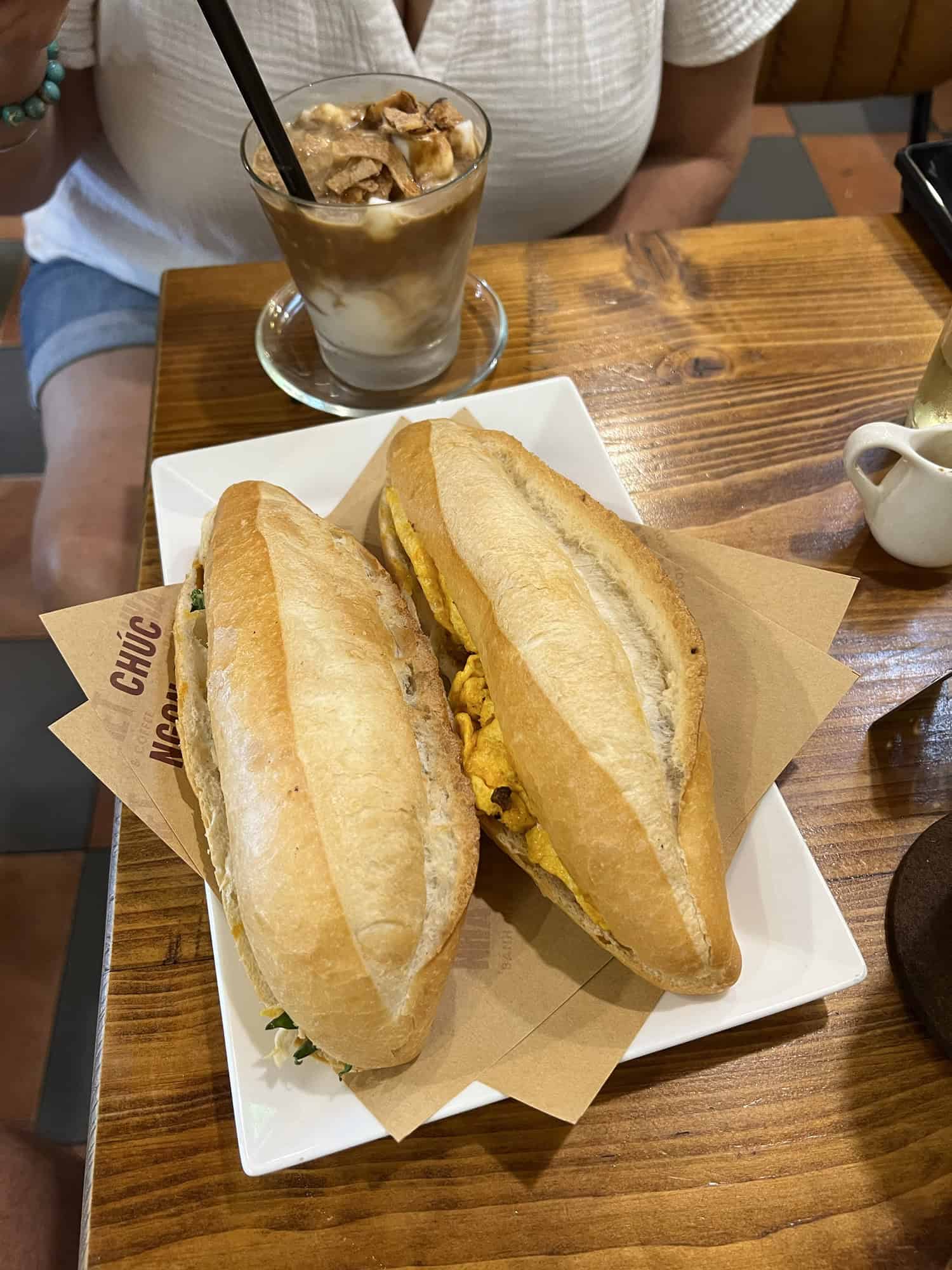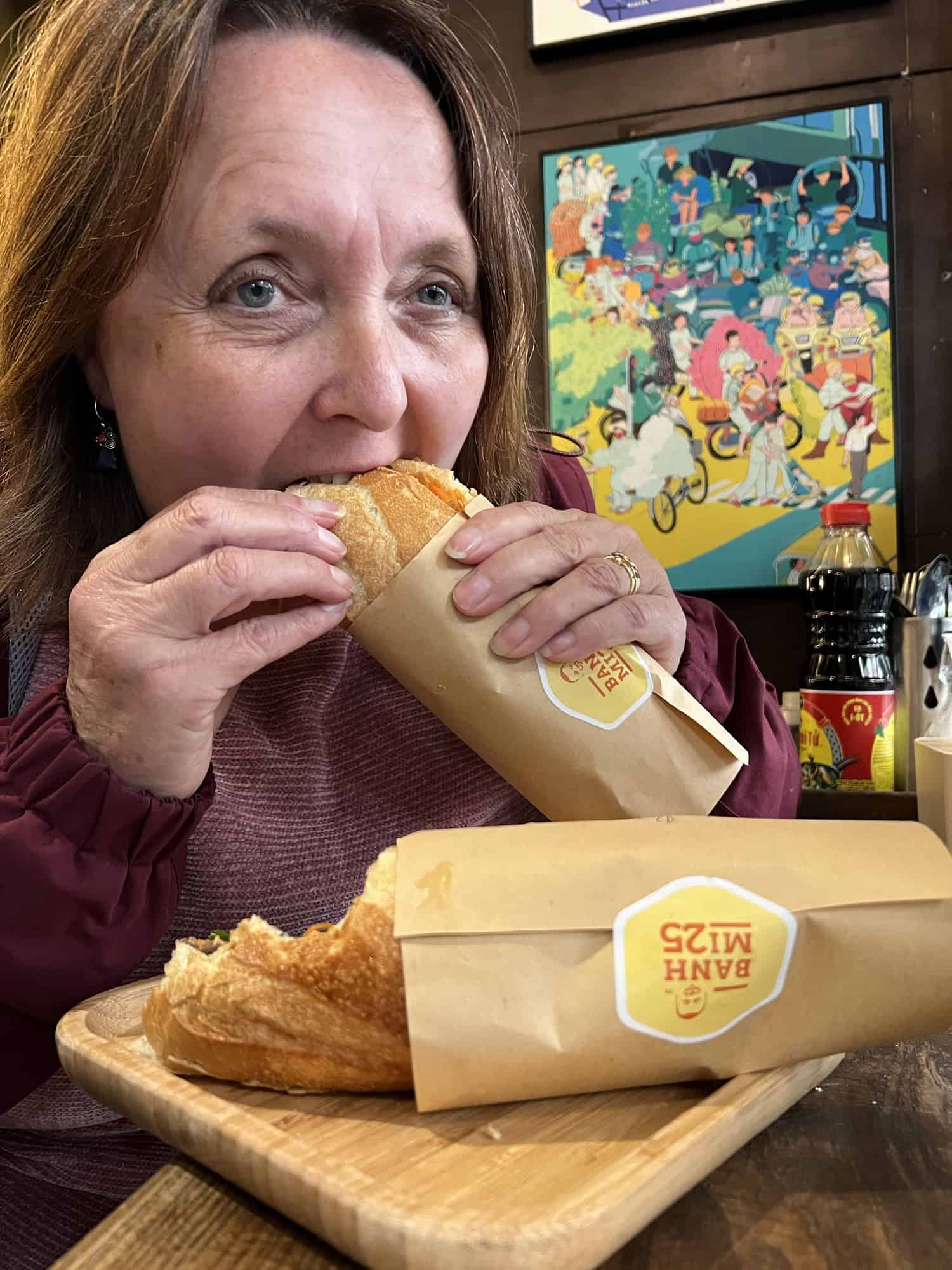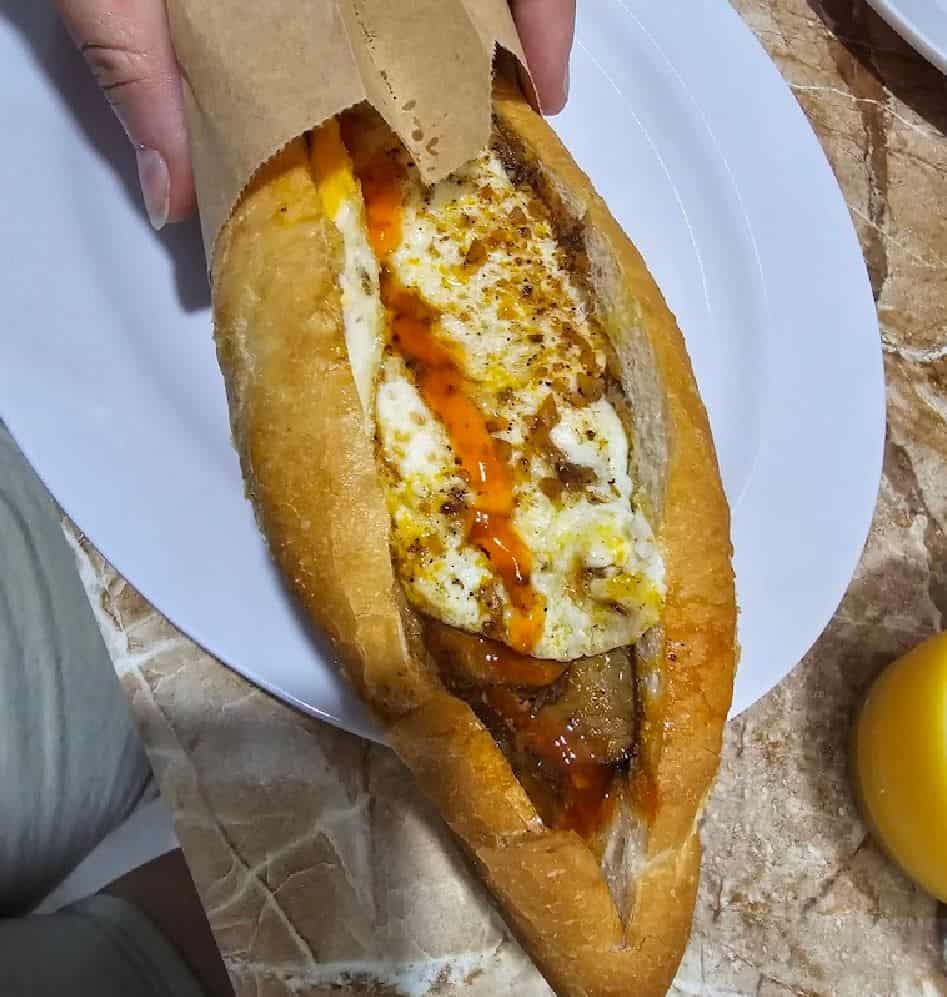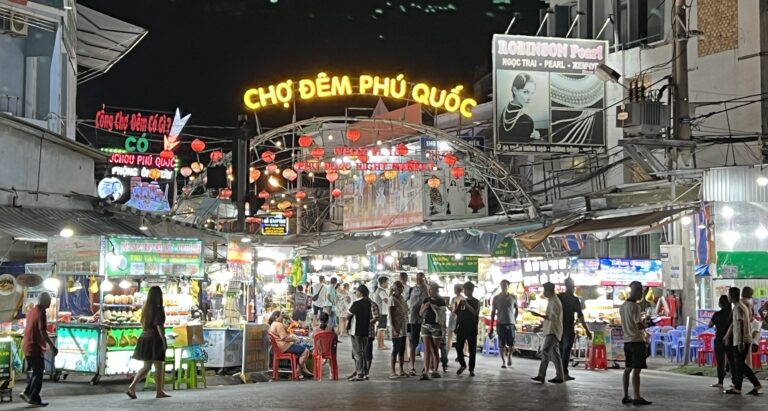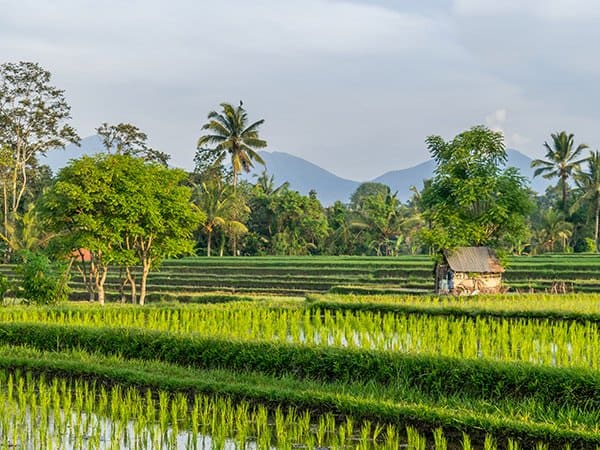16 Best Dishes You Must Try in Vietnam: + Foodie Experiences

Not only is Vietnam worth visiting, but you are in for a culinary adventure! This country is packed with unique dishes that you just have to try. From the buzzing street food stalls in Hanoi to the laid-back eateries by the coast, Vietnam’s food scene is a delicious blend of tastes and textures.
In this article, we’ll introduce you to the 16 best local dishes you must try in Vietnam, as well as our favourite foodie experiences. Trust us, your taste buds are in for a treat!
The Origins of Vietnamese Cuisine
Vietnamese food has a long history shaped by its geography, culture, and historical events. The foundation of Vietnamese cuisine lies in its agricultural roots, with rice being the staple ingredient.
The cuisine has been influenced by various cultures throughout its history. Early on, Chinese rule left a significant mark, introducing techniques such as stir-frying and ingredients like soy sauce and noodles.
During the French colonial period in the 19th and 20th centuries, French culinary techniques and ingredients were integrated into Vietnamese cuisine. This fusion gave rise to iconic dishes such as bánh mì, a baguette sandwich, and phở, a noodle soup that blends French and Chinese influences.
Throughout its history, Vietnam’s regional diversity has contributed to the variety of its food. The northern region, with its cooler climate, favours hearty and savoury dishes.
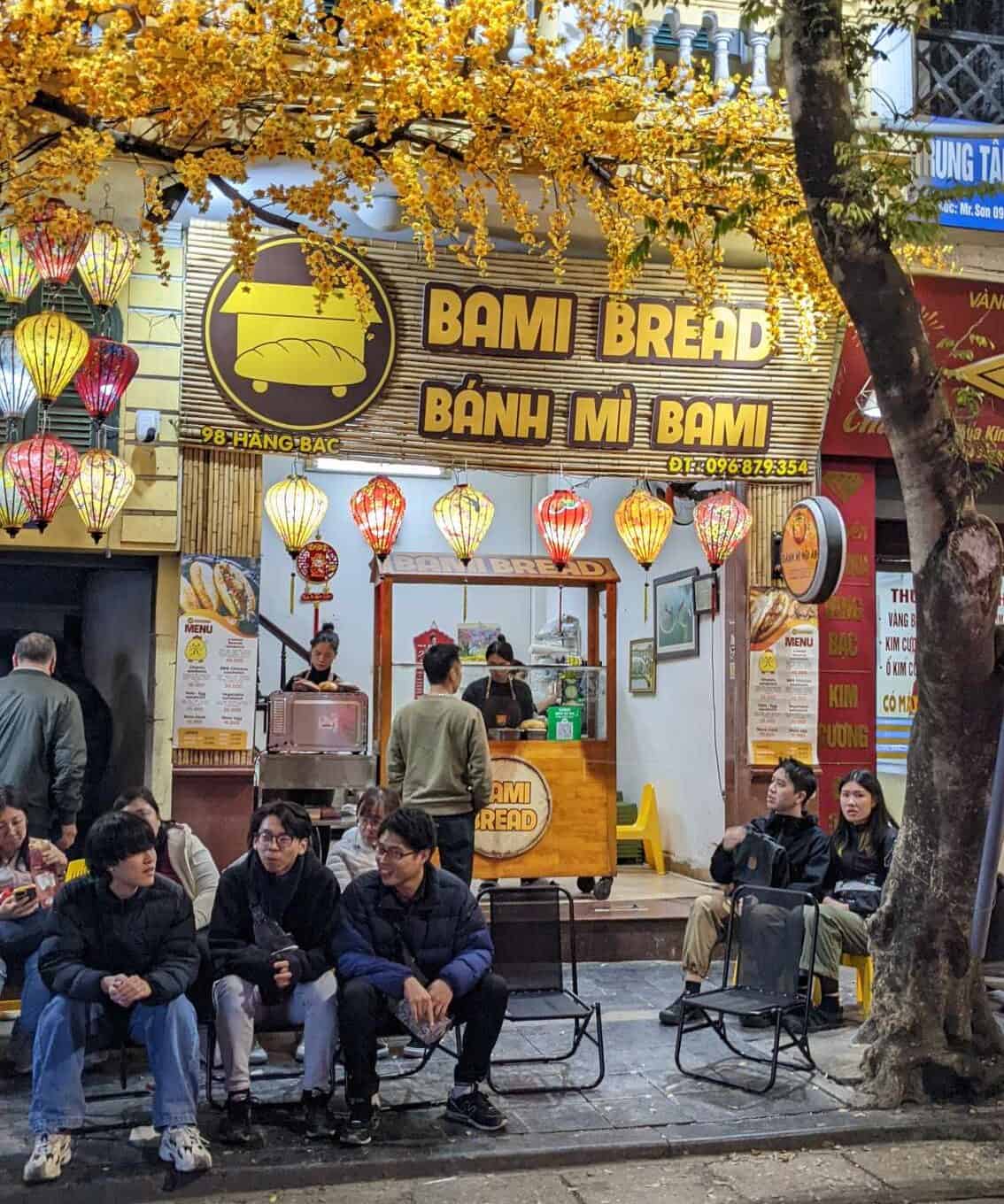
The best dishes to try in Vietnam
While Vietnam is renowned for its diverse and flavorful cuisine, we recommend you find and try the following dishes:
We have included map links to all of our recommendations.
🥢 Phở:
A fragrant noodle soup typically made with beef (phở bò) or chicken (phở gà), garnished with fresh herbs, lime, and chilli. Phở is one of the best-known Vietnamese dishes around the world, and for good reason.
You should try Phở in every region you visit across Vietnam as the ingredients, flavours and technique can vary. Which is the best? For us Hanoi was the tastiest but travellers have never picked a clear winner.
The best Phở we had was at a lovely restaurant close to Beer Street in Hanoi called Hoang’s. You will find a great atmosphere, friendly staff, and cheap drinks, plus Pauline rates it the best Phở in the world!
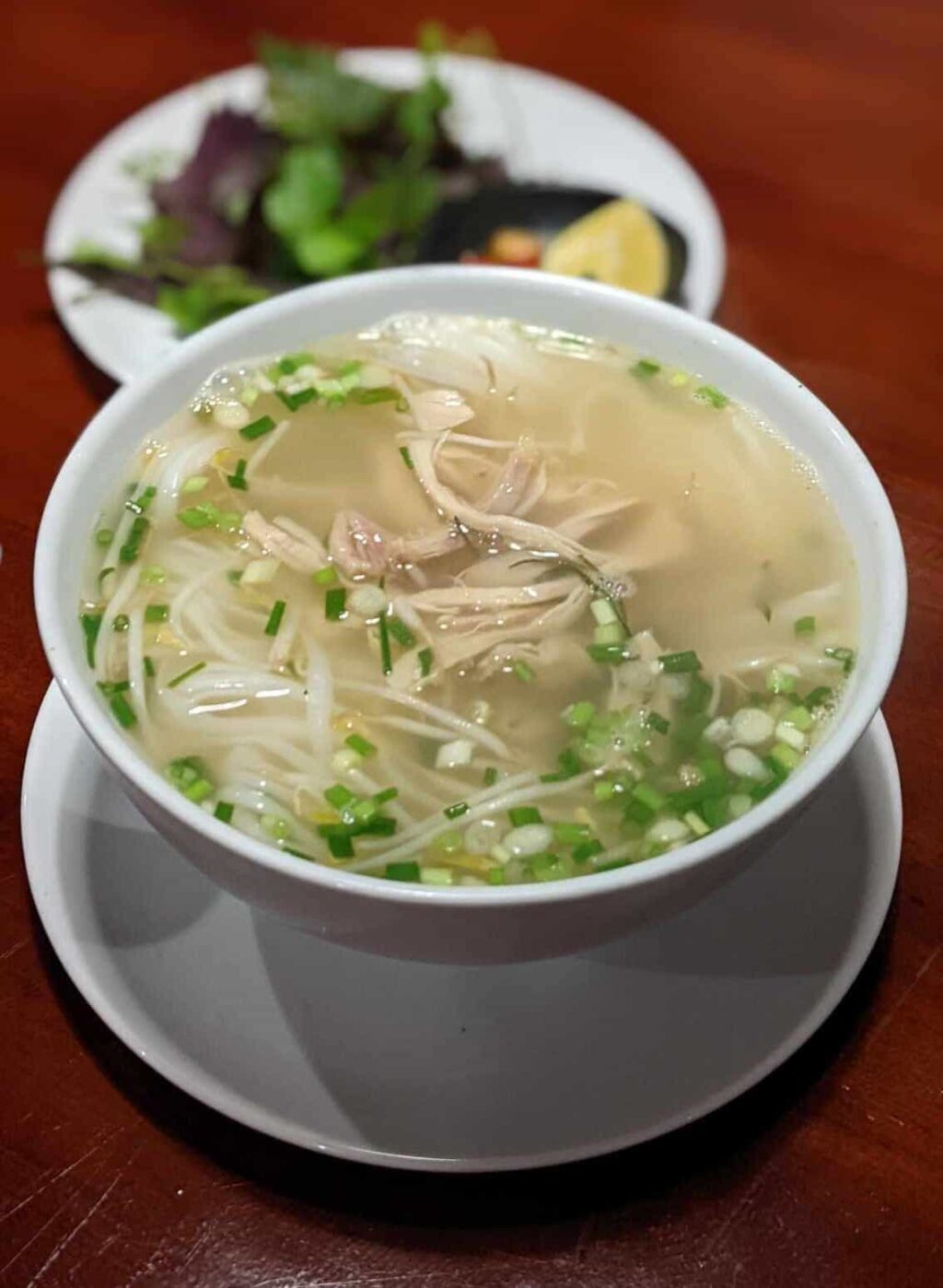
🥢 Bánh mì:
A French-inspired baguette sandwich traditionally filled with ingredients like pork, pate, pickled vegetables, and fresh cilantro. However, the popularity of Bánh mì has opened the door to a wide variety of fillings to suit any taste.
Bánh mì is offered as a 24 hour food option in Vietnam, popular anytime from breakfast when the meat content is usually replaced with egg, to a snack to grab at the end of a big night out.
We had several great Bánh mì during our visit but the three standouts were:
- The breakfast Bánh mì at Banh mi & Coffee NHÀ VIỆT in Da Nang. You get a fresh, crusty roll packed with spiced egg, pickled veggies and chilli sauce, add a coconut coffee and your day gets a perfect start.
- One of the highest-rated places in Hanoi is Banh Mi 25 so we had to try it out. You will have to line up but there is plenty of seating and the fillings are the tastiest we had in Vietnam. Make sure you eat here.
- And finally to a hidden gem in Hoi An which we almost didn’t even get to because of how tricky it was to find. Hoi An Bread is a tiny family-run place down a narrow allow. Hard to find but definitely worth the effort. Make sure to try the “Mixed Bread”, a Bánh mì with the lot.
🥢 Gỏi cuốn (Summer Rolls):
Gỏi cuốn, also known as Vietnamese summer rolls or fresh spring rolls, are a popular and healthy dish in Vietnamese cuisine.
They are made with rice paper and typically filled with fresh herbs, vermicelli noodles, shrimp or pork, and vegetables like lettuce and cucumber.
Unlike fried spring rolls, gỏi cuốn are served fresh and are often accompanied by a dipping sauce, such as hoisin-peanut sauce or nước chấm, a tangy fish sauce-based dip.
The best Gỏi cuốn we had was actually made by Pauline during a cooking demonstration on our Le Journey Halong Bay cruise. To be honest I prefer the fried spring rolls!
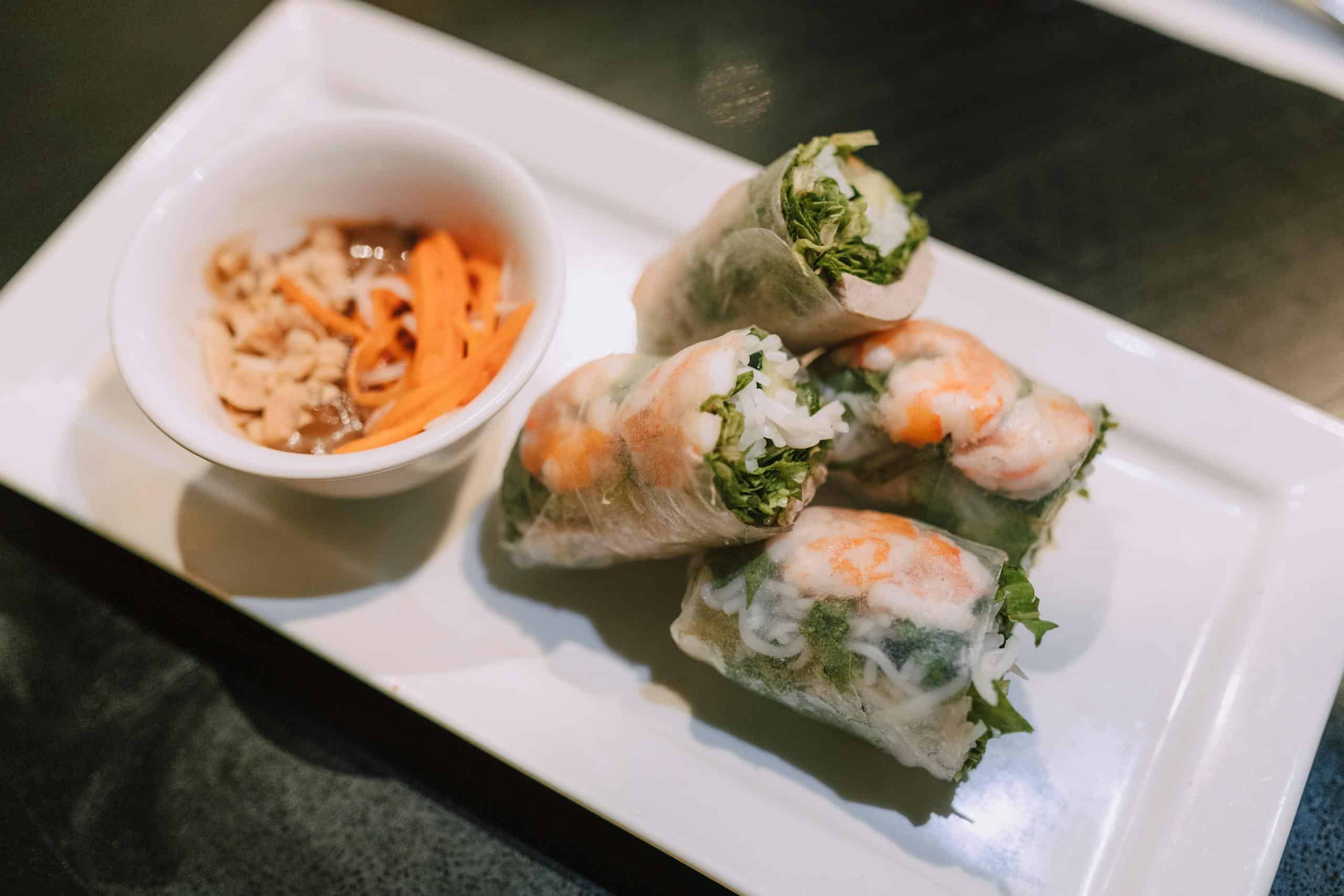
🥢 Bún chả:
Bún chả is a beloved Vietnamese dish from Hanoi, combining grilled pork served with rice vermicelli noodles, fresh herbs, pickled vegetables, and a tangy dipping sauce called “nước chấm.”
The pork, marinated and grilled to a smoky perfection, comes in two forms: ground pork patties (“chả băm”) and thin slices of pork belly (“chả miếng”). The correct method of eating this dish is to mix the components and dip each bite into the flavorful sauce.
This light yet satisfying dish gained international fame when Barack Obama and Anthony Bourdain were shown eating it in 2016.
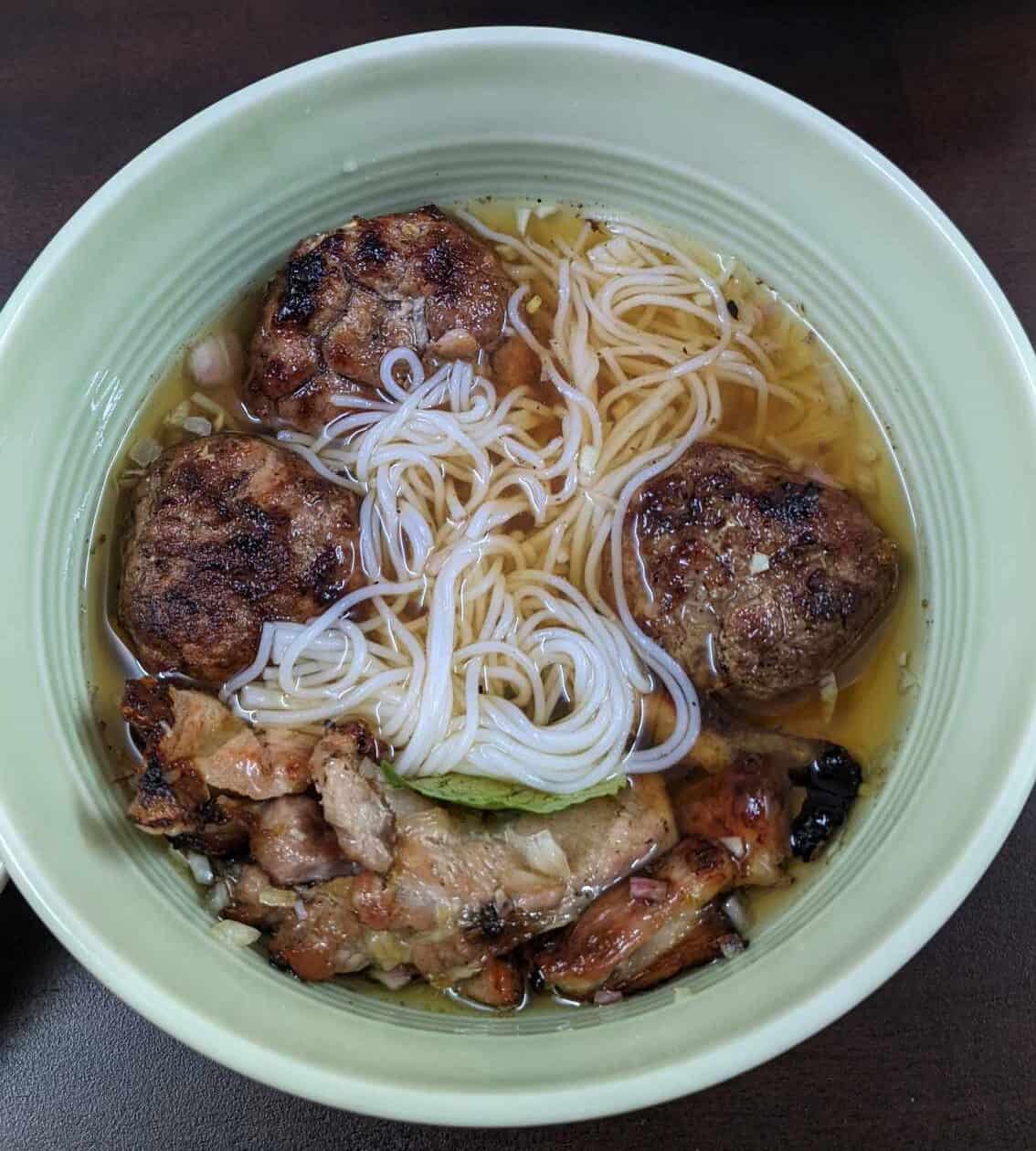
🥢 Cao lầu:
Cao lầu is a distinctive Vietnamese dish native to Hội An which consists of thick rice noodles, slices of juicy pork, and fresh local greens, topped with crispy fried rice paper or dough croutons.
What sets Cao lầu apart is the noodles, which are traditionally made using water from an ancient Cham well in Hội An and sometimes mixed with ash for a distinctive texture and flavour.
Served with a small amount of rich, seasoned broth that coats the noodles, Cao lầu is not only a culinary treat but also a cultural emblem of Hội An.
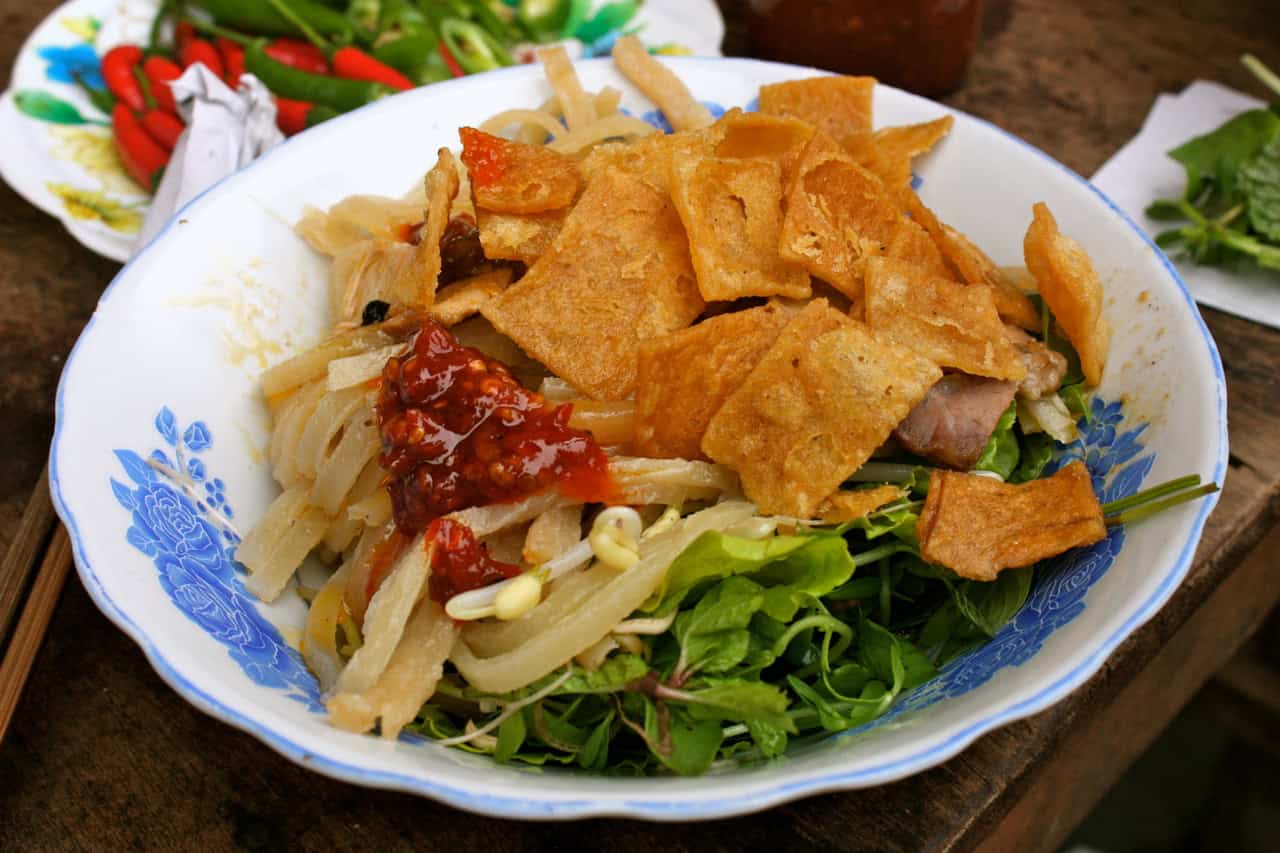
🥢 Bánh xèo:
Bánh xèo is a savoury Vietnamese crepe that you will find throughout the country. The name “bánh xèo” translates to “sizzling pancake,” referring to the loud sizzling sound the rice batter makes when it hits a hot skillet.
This crispy crepe is made from a batter of rice flour, water, and turmeric, which gives it a characteristic yellow colour and is typically filled with a mix of shrimp, pork, sliced onions, and bean sprouts.
Once fried, bánh xèo is served with fresh herbs like mint and basil, as well as lettuce, which is used to wrap pieces of the crepe before dipping them into a tangy fish sauce-based dipping sauce called nước chấm.
Bánh xèo can be a hit-or-miss proposition depending on how it is cooked. Done well it becomes a wonderful crispy shell full of deliciousness, but when done poorly it becomes an oily mess that ruins the other ingredients.
We started off well with a great example on our Hanoi street food tour but the version we were taught during one of our Hoi An cooking classes left oil running down our hands while we were trying to eat.
See below for more information on our food tours and cooking classes during our Vietnam trip.
🥢 Chả giò (Fried Spring Rolls):
Chả giò, or Vietnamese fried spring rolls, can be found everywhere in Vietnam. These crispy rolls are wrapped in rice paper and filled with a mixture of ground meat (usually pork or chicken), shrimp, mushrooms, and various vegetables such as carrots and glass noodles.
The ingredients are seasoned with traditional spices before being tightly rolled and deep-fried until golden brown and crunchy. The rolls are usually dipped into the sweet and tangy fish sauce-based dip called Nước chấm.
This combination of crisp texture and savoury filling, paired with the freshness of herbs and the depth of the dipping sauce, makes chả giò a delightful and popular choice in Vietnamese cuisine.
Everybody loves a fried Spring Roll so it’s a good thing that they are so widely available. As with many dishes in Vietnam, some versions are suitable for vegetarians.
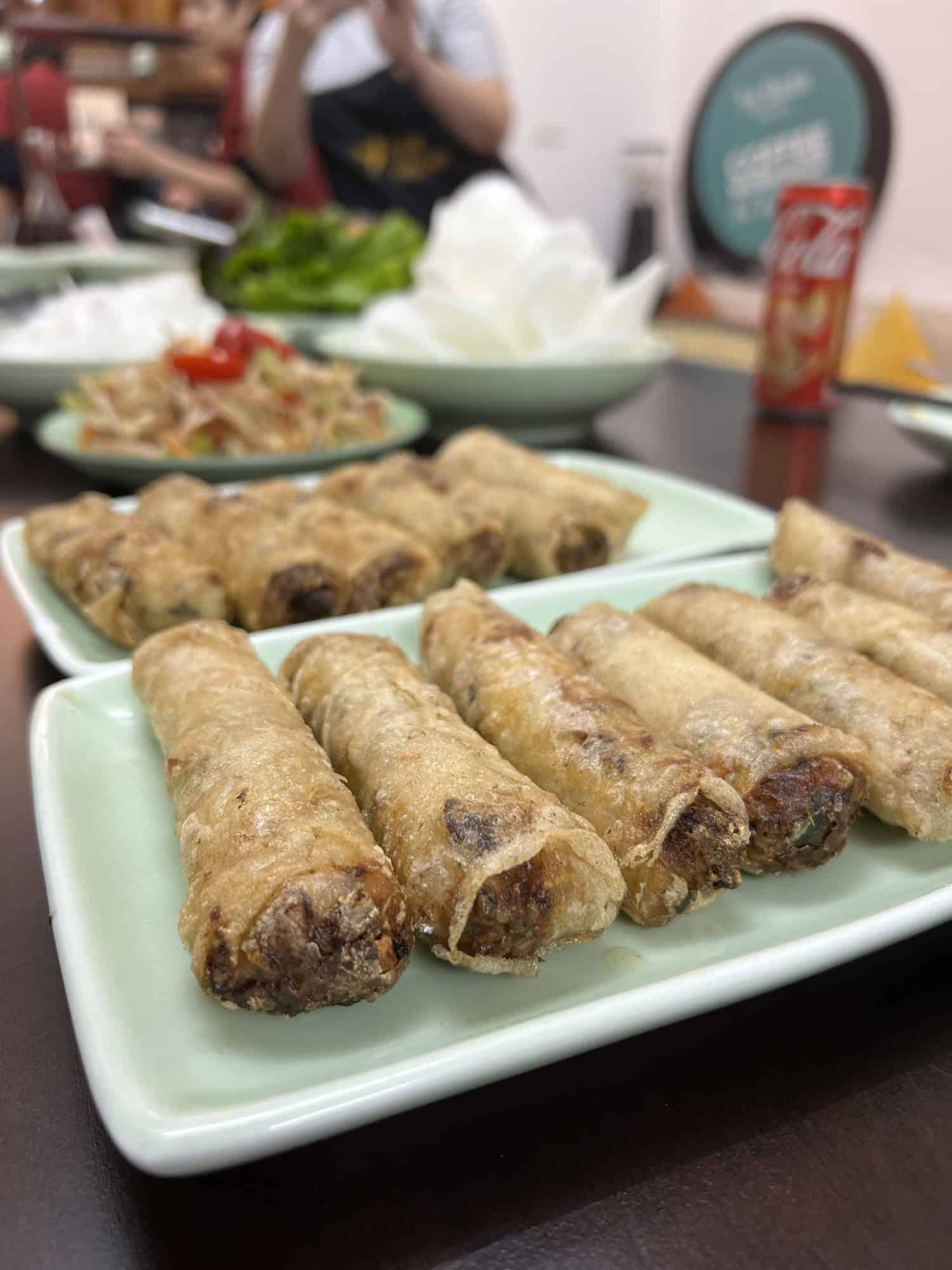
🥢 Cơm tấm:
Cơm tấm, or “broken rice,” is particularly popular in southern regions like Ho Chi Minh City.
Originally made from fragmented rice grains broken during the milling process, Cơm tấm has turned a once-discarded product into a sought-after delicacy.
This dish is typically served as a platter that includes the broken rice with grilled pork (either ribs or shredded), a fried egg, and various extras like fresh cucumber slices, pickled vegetables, and a side of nước chấm sauce.
Often a small portion of bì (shredded pork and pork skin) is added to the plate, creating a textural contrast.
🥢 Cơm gà (Vietnamese Chicken Rice):
Cơm gà, or Vietnamese chicken rice, is popular throughout Vietnam, but especially in the central regions like Hội An.
Tender poached or roasted chicken is served on a bed of fragrant rice that has been cooked in chicken broth and often infused with turmeric, which gives it a yellow colour.
The chicken is typically seasoned with garlic, ginger, and herbs, and usually accompanied by a side of fresh vegetables, such as cucumber and pickled carrots, and garnished with herbs like cilantro.
A small bowl of chicken broth and a dipping sauce made from chilli, garlic, lime, and fish sauce complete the meal. It may look like plain chicken on plain rice but add the sauce and it’s a game-changer.
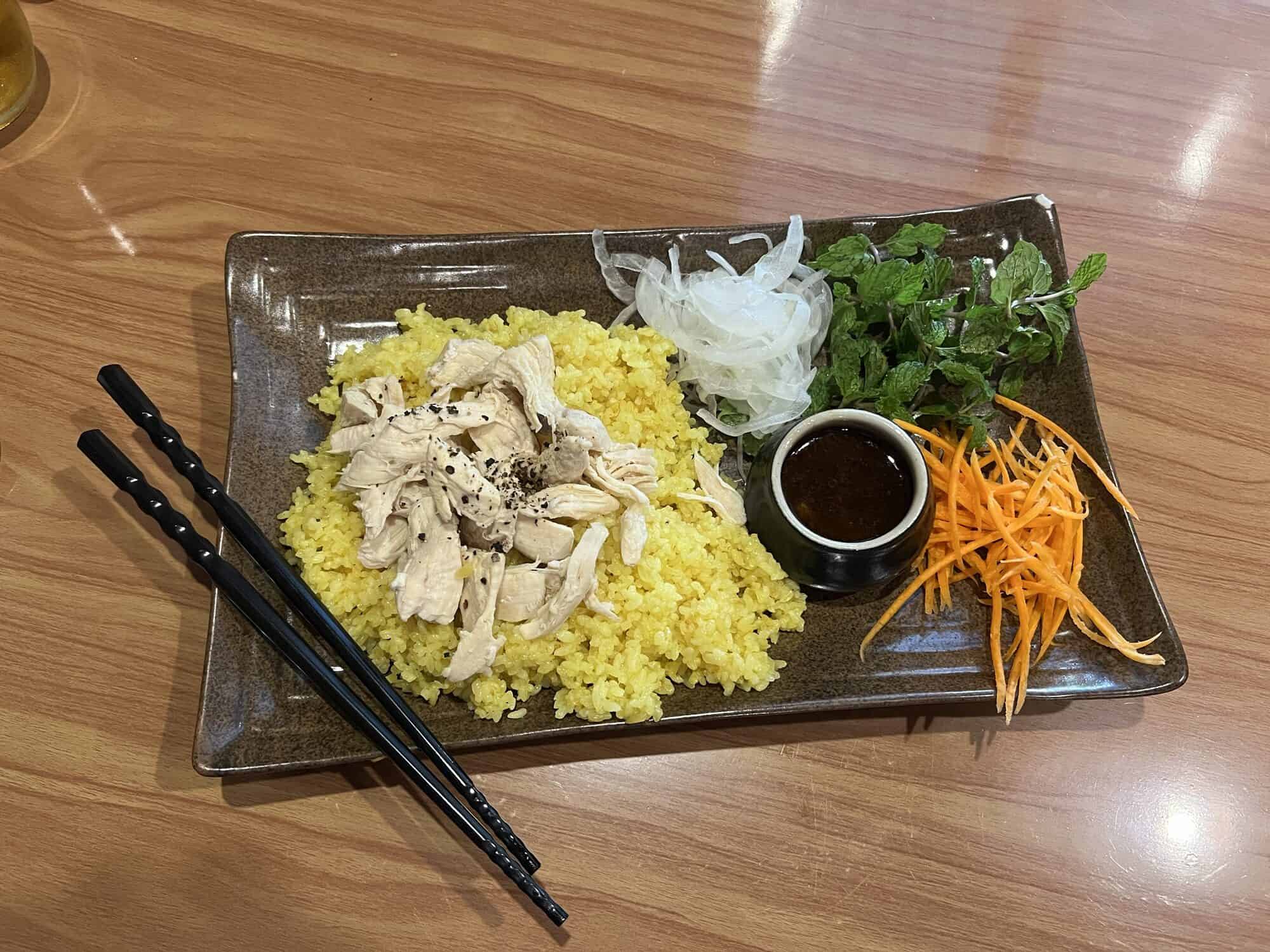
We had Cơm gà at an amazing little restaurant in Hoi An called Claypot. The owner, a lovely lady named Trang, cooks everything from scratch and then takes the time to explain the dish to you and how to eat it.
The Claypot meal was so good that we arranged a cooking class with Trang the following morning to learn how to cook the Cơm gà and other dishes. (More details on this and other cooking classes can be found below)
🥢 Bún bò Nam Bộ (Warm Beef Noodle Salad):
Bún bò Nam Bộ, or warm beef noodle salad, features tender slices of stir-fried beef on a bed of rice vermicelli noodles. It is typically served with fresh herbs and crisp vegetables like lettuce, bean sprouts, and pickled carrots.
The salad is generously topped with crushed peanuts and fried shallots for added texture and flavour. Nước chấm is poured over the salad, infusing it with a perfect balance of sweet, sour, salty, and spicy.
We experienced this unexpected pleasure on our first evening in Vietnam while doing a street food tour in Hanoi. It may not be much to look at but this dish stole the show. (More street food tour details below)
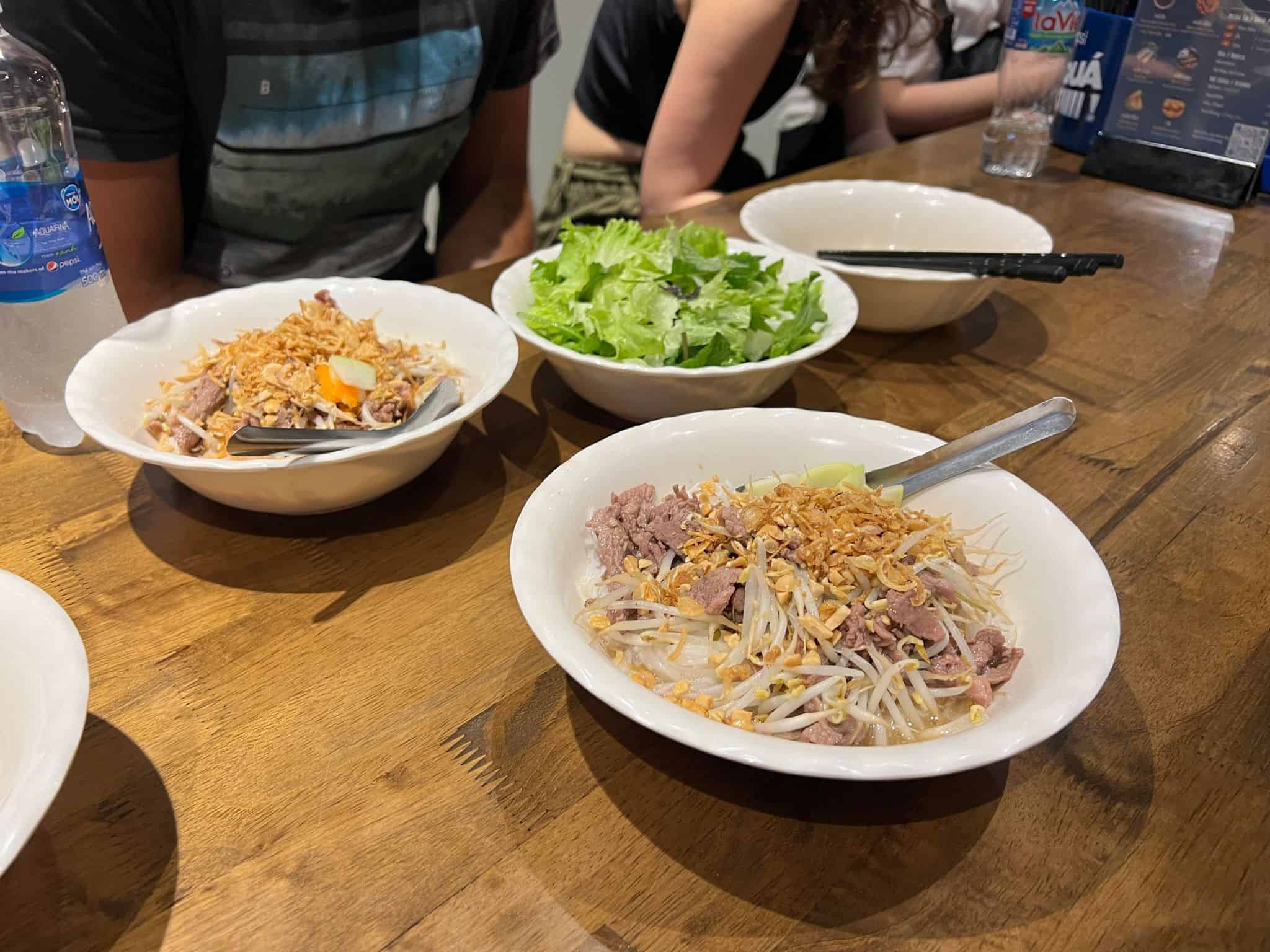
🥢 Chúc quí khách ngon miệng (Chicken or Pork in clay with pineapple and sugarcane)
I had never seen a dish with sugarcane as an ingredient so when this popped up on the menu at Claypot Restaurant in Hoi An, I figured it was time to give it a try. Plus it had pineapple which always makes me happy.
While many people, Pauline included, may find this too sweet for a main meal, I really liked it and felt that the chilli did enough to balance the flavours. The sugarcane confused me a little though.
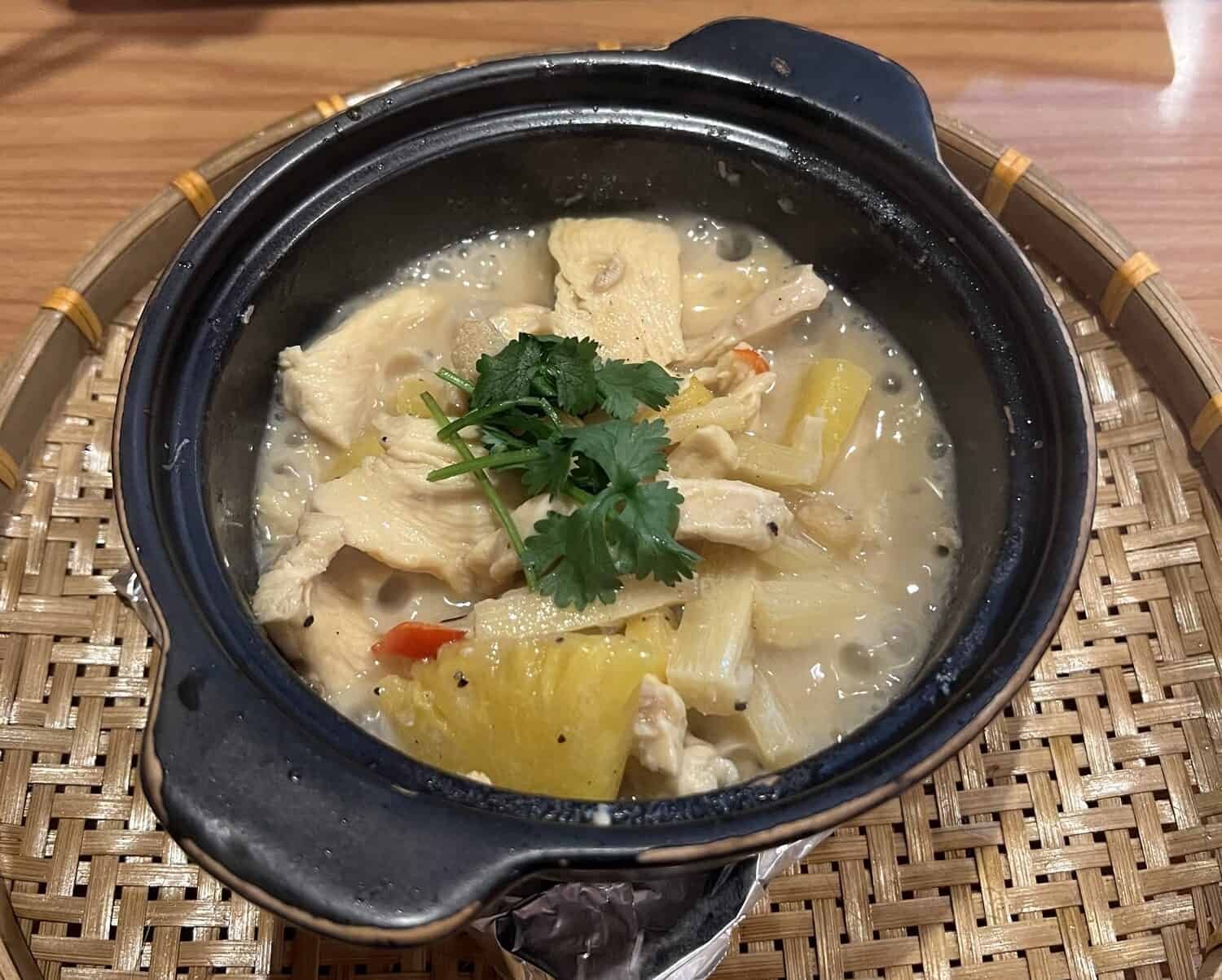
You can understand how the sugarcane adds an extra flavour element to this dish but until I asked our host Trang whether it was there just for flavour or to be eaten, I had chewed my way through a few pieces and they weren’t particularly pleasant.
Trang advised us that some people enjoy chewing them but mostly the pieces are moved to the side or removed completely while eating. I enjoyed the dish much more without eating any more sugarcane.
🥢 Mì Xào Giòn (Crispy Noodle Stir Fry)
Mì Xào Giòn, or crispy noodle stir fry, is known for its delightful combination of textures and flavours. This dish features crispy, deep-fried egg noodles topped with a savoury stir fry of meat (usually beef, chicken, or shrimp) and vegetables like bok choy, broccoli, and bell peppers.
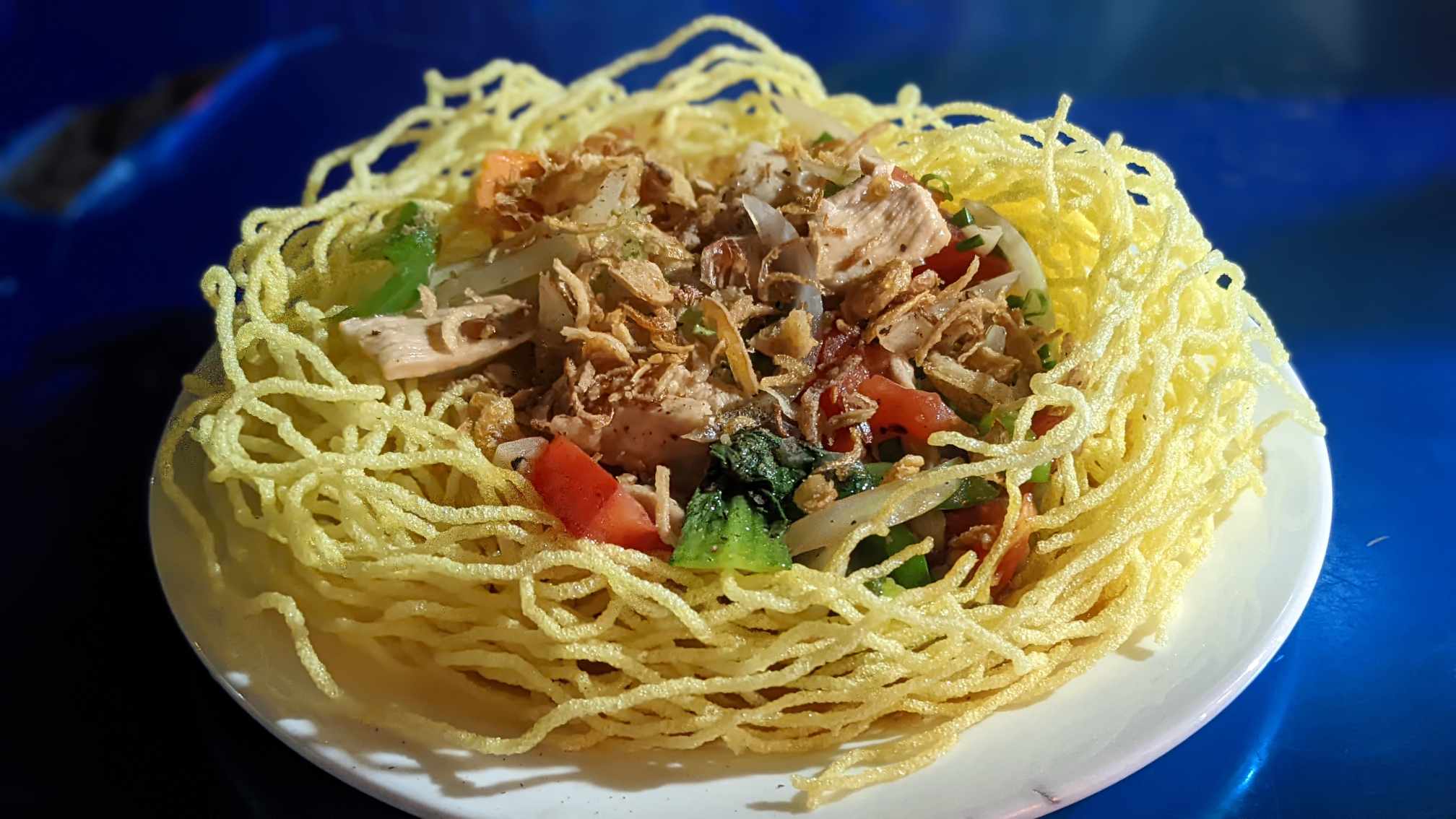
The stir fry is cooked in a rich sauce made from soy sauce, oyster sauce, and garlic, which coats the noodles and toppings beautifully. The contrast between the crunchy noodles and the tender, saucy stir-fry is perfect.
🥢 Chúc quí khách ngon miệng (fried wontons)
This crunchy delight is a popular appetizer in Vietnamese cuisine, especially in Hội An. They feature crispy, deep-fried wonton wrappers serving as a base for a variety of toppings.
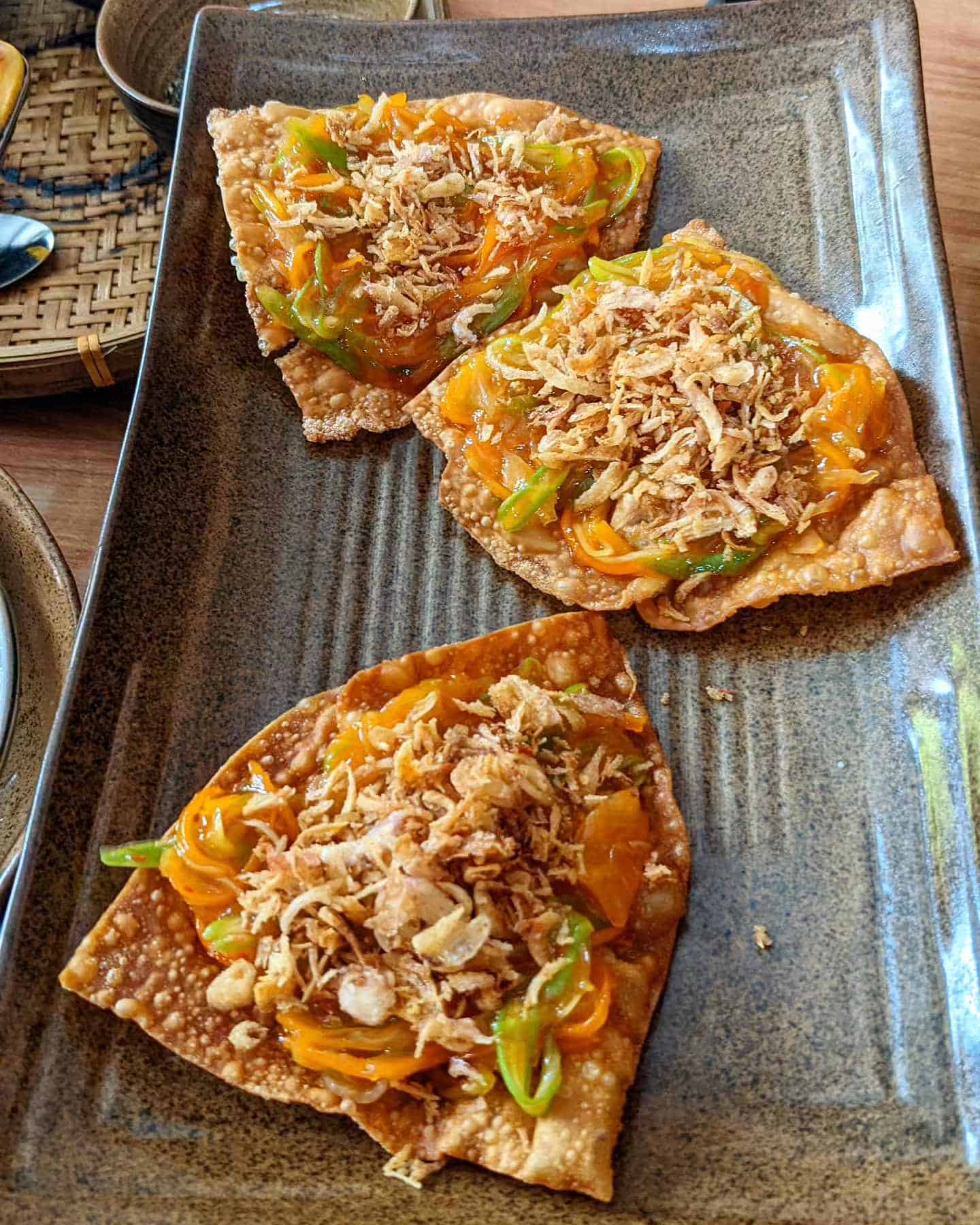
These may include ground pork, shrimp, or chicken with a fresh Vietnamese salad and a sweet and tangy sauce made from pork stock powder, vegetable oil, and sweet plum chilli sauce.
Similar to a Mexican Tostada, Chúc quí khách ngon miệng fried wontons combine to create a delicious blend of textures and tastes that make a fantastic street food bite.
🥢 Bánh bèo (Steamed rice cakes)
These delicate, steamed rice cakes are typically served in small, flat dishes. Made from a simple batter of rice flour and water, bánh bèo has a soft, chewy texture. They are a traditional dish of Huế in central Vietnam.
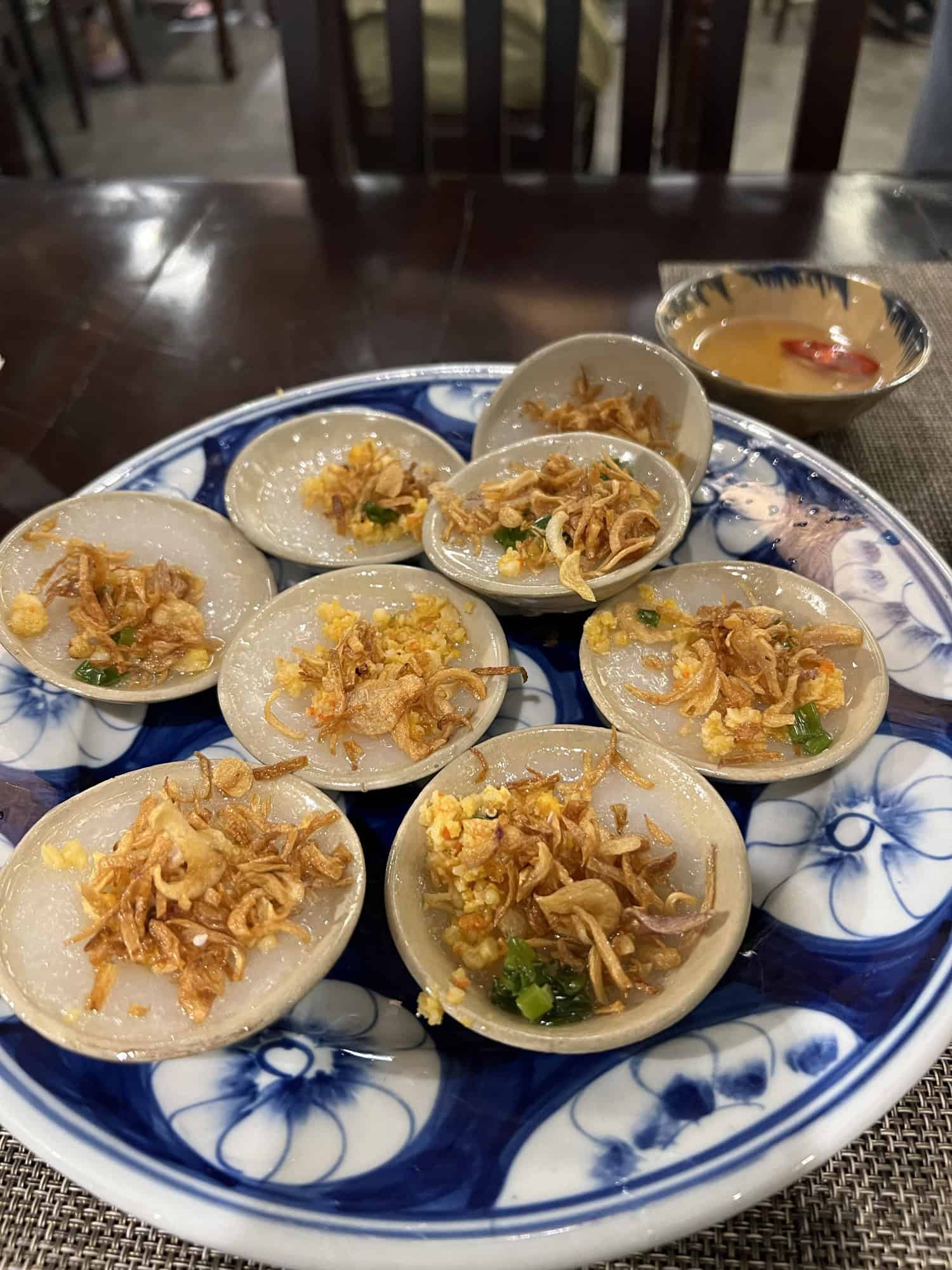
Each cake is topped with savoury ingredients such as minced shrimp, crispy fried shallots, mung bean paste, and scallions. A drizzle of sweet and tangy nước chấm sauce adds a burst of flavour to every bite.
Once again this was a dish that Pauline enjoyed but wasn’t to my liking. It is very much like an open steamed dumpling.
🥢 Macapuno Gelato at CocoDeli Phú Quốc – Kem Trái Dừa
We found this in a lovely kiosk one block from the entrance to the Phu Quoc Night Market, CocoDeli sells the silkiest coconut gelato you will ever taste. And they serve it in a coconut shell with a little umbrella… how nice is that?
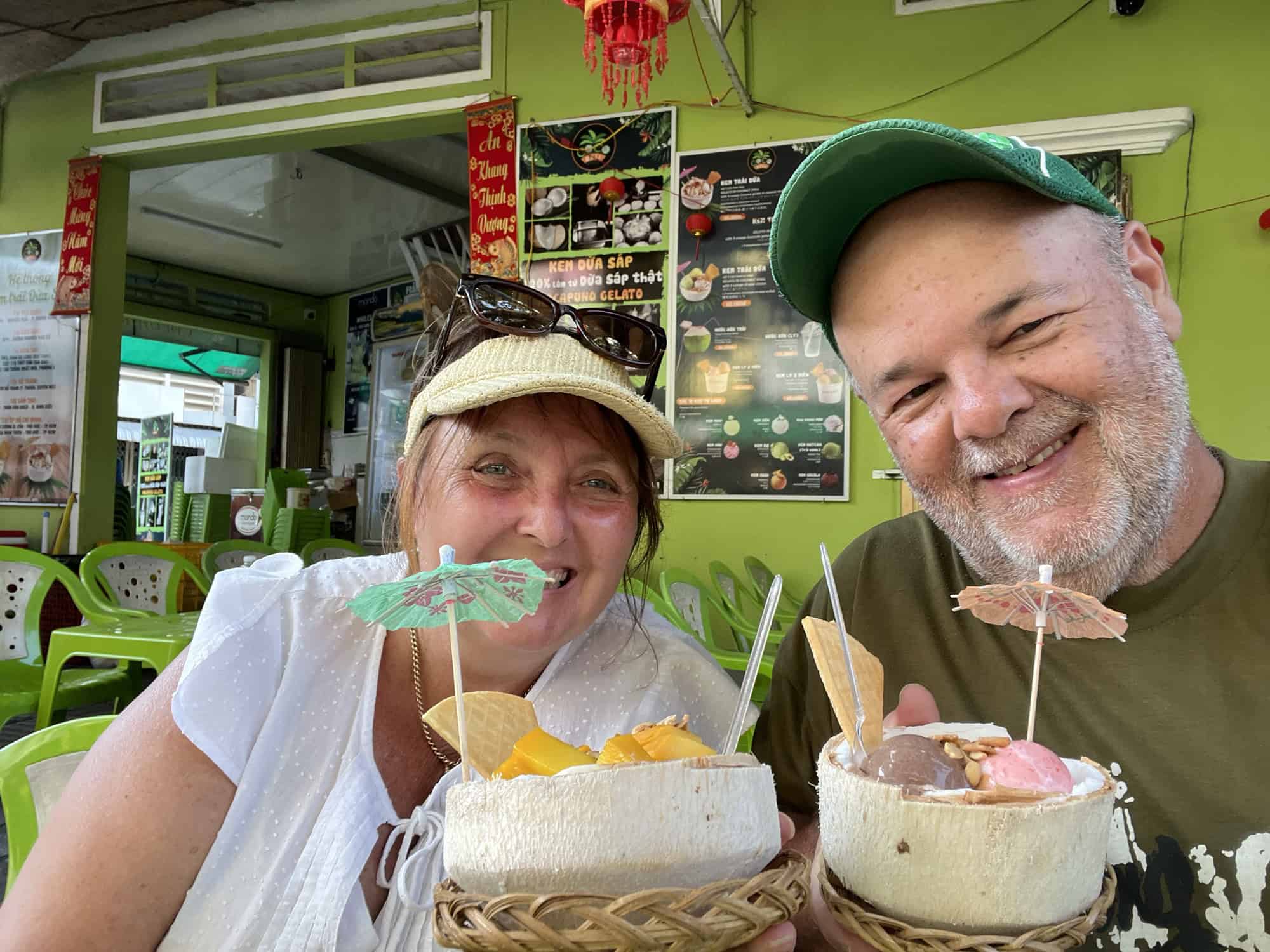
If you have never tried coconut gelato, this will be a treat, especially if you want something cold and refreshing as relief from the island heat. They offer several flavours but the coconut is special.
CocoDeli is franchised which means you may stumble across a kiosk anywhere in Vietnam and if so, do yourself a favour and try it.
🥢 French pastries
The most obvious example of French influence on Vietnamese food has to be the Bánh mì, but it does not stop there. Croissants are also widely found across Vietnam, but it was the fancy pastries that caught my eye.
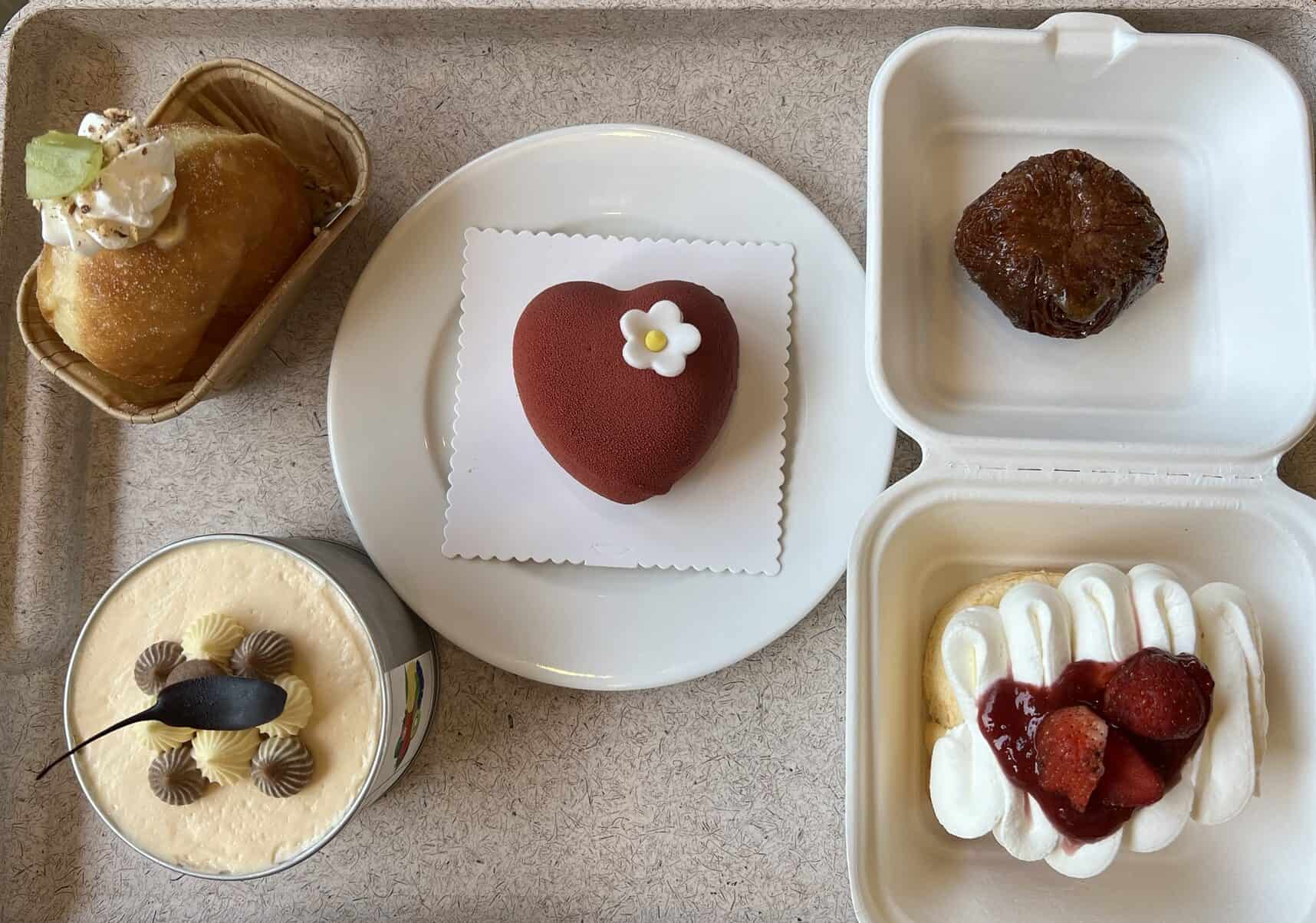
We bought this delightful ensemble from a busy bakery called The Cups Coffee in Da Nang. These five amazing sweet treats cost roughly the same as we would expect to pay for just one or maybe two back in Australia.
🥢 Vietnamese Coffee
I know, it’s not a food. But it is considered a staple in the Vietnamese diet and they have created some interesting variations. I dislike coffee in every form but here are Pauline’s favourite concoctions:
Cà phê trứng (Egg Coffee)
This is a unique beverage originating from Hanoi. This rich and creamy coffee features a layer of whipped egg yolk mixed with sugar and sweetened condensed milk, creating a frothy, custard-like topping.

The egg mixture is carefully poured over a cup of strong, aromatic Vietnamese coffee, resulting in a delightful contrast of flavours. The ideal cafe to try this beverage is Cafe Dinh in Hanoi.
Cafe Dinh is owned by the daughter of the creator of egg coffee so you be sure that the recipe is as traditional as it comes.
Cà phê cốt dừa (Cococnut Coffee)
This delightful beverage combines strong Vietnamese coffee with creamy coconut milk and sweetened condensed milk, blended together to create a smooth, frothy concoction.
Some variations include adding coconut ice cream for an extra layer of indulgence, or serving a cup of sweetened coconut sorbet and a small pot of strong coffee to be poured over the sorbet at the table. And the toasted coconut shards on top are a amazing bonus.
That final option was Pauline’s favourite coffee of the whole trip and we discovered it being served with the amazing breakfast Bánh mì at Banh mi & Coffee NHÀ VIỆT in Da Nang.
Amazing Foodie Experiences in Vietnam
While it’s great to have a list of the dishes you should be seeking out on your Vietnam trip, it’s even better to know how and where to get them. Here are some of our favourite restaurants, cooking classes and food tours in Vietnam.
Best restaurants in Vietnam
We are not simply going to the internet and searching for “best restaurants in…” because we have found that a large number of reviews and a high rating does not always mean good food.
Even in Hanoi we tried one of the highest-rated restaurants and found the food dry and bland compared to other places. We did notice two tour groups arrive while we were there and most of the ratings must come from these groups. Unfortunately, they only experience “tourist” food and not local food.
Hoang’s Restaurant in Hanoi.
Located a block from the northern end of Hanoi’s famous Beer Street, Hoang’s is a popular little place with enthusiastic and friendly staff, delicious food in generous servings, and cheap beer and cocktails.
The reason Hoang’s made our top food experiences in Vietnam list is for the bowl of chicken Phở Pauline had while we were there. She has always loved any good brothy soup and rates this as her favourite ever. Even I thoroughly enjoyed it and found it bursting with flavour.
Claypot Restaurant in Hoi An
Well away from the tourist crowds in Old Town Hoi An, tucked away just off the main street in a tiny but beautiful restaurant called Claypot. This family-run place wins the title of our favourite restaurant in Vietnam.
The main owner, chef, and part-time waiter is an amazing lady named Trang. Not only does she prepare every dish from scratch as it’s ordered but she takes the time to come to your table, explain each dish, and then show you the traditional way to eat it.
Several of the dishes in the list above are available here but we strongly recommend that you have the Fried Wontons, Chicken Rice, and the Chicken in Clay with Pineapple and Sugarcane. Every bite was a treat!
We have travelled to roughly 30 countries and rate this meal in the top 3 that we have eaten anywhere. It was so good that we came back the following morning for a cooking class to learn how they are all prepared and cooked.
Mr Son in Hoi An
There is a tiny street kitchen across the river at the end of the tourist section in Old Town Hoi An called Mr Son. It looks like the type of place that many tourists immediately think looks dirty but often ends up being the best local food to be found.
Mr Son is just one of about half a dozen vendors tightly packed together in a foodcourt style arrangement. The tables and chairs are all basic and are spread across the sidewalk. There are no fancy napkins here.
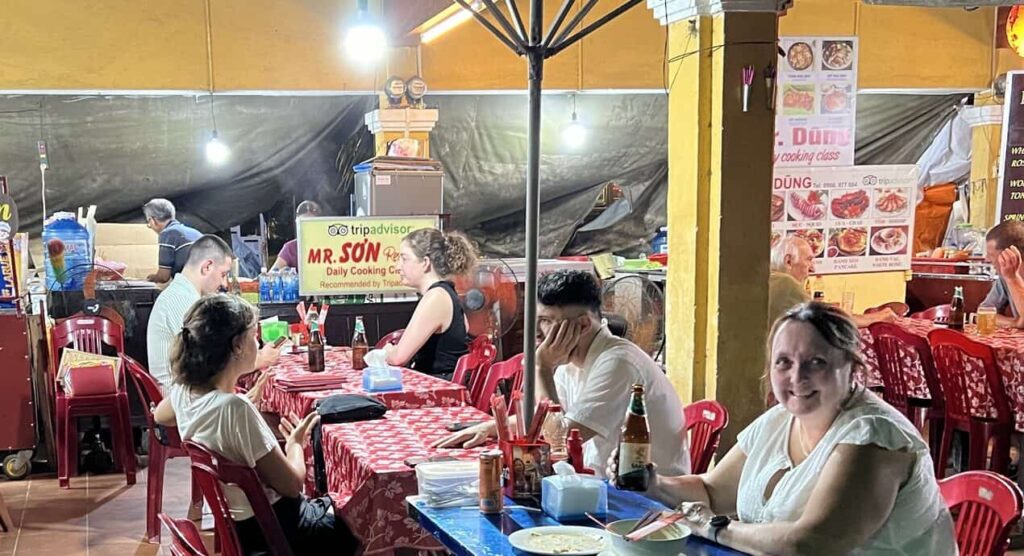
The food was not only incredibly cheap but lovingly prepared from fresh ingredients and delivered with a big smile to compensate for a lack of English being spoken. Good food always beats good grammar in my opinion.
This is where we had the Fried Noodle Stirfry, which is on our list above. This was a standout but everything we ate here was excellent. This represents street food at its best.
Nhà hàng Bánh Gánh in Huế
We wouldn’t have found this place if it wasn’t right next to our hotel, in fact it is so discrete that we didn’t notice it until our third day in town. But after having such a good lunch here on that day we had to return for dinner.
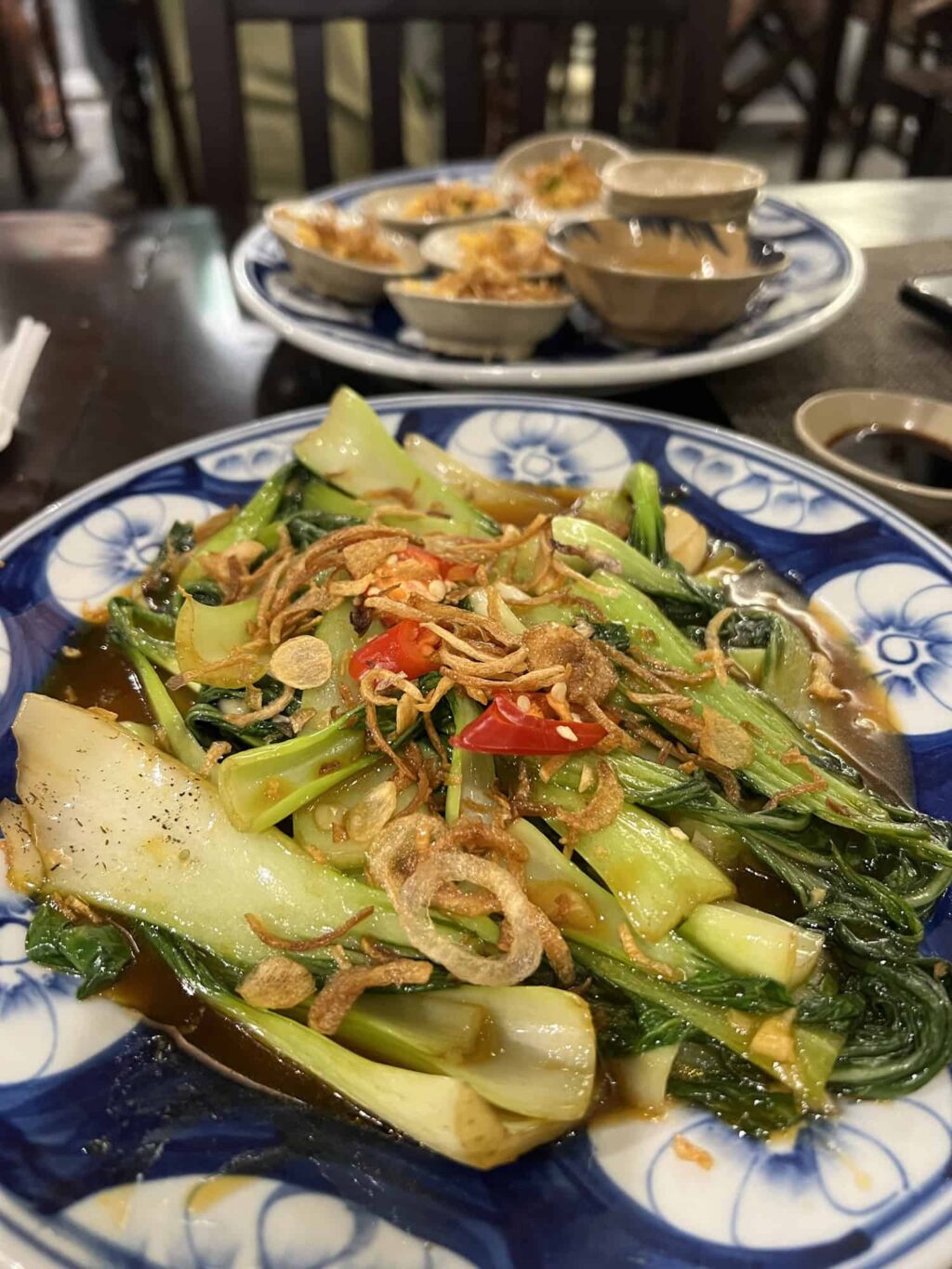
There wasn’t a bad dish on the Nhà hàng Bánh Gánh menu and, with the prices being so cheap for foreigners, everyone was loading up their table with food to try a bit of everything.
This is where we tried the Huế Steamed Rice Cakes from our list above, but the real testament to the clever way the Vietnamese use flavours was how they managed to elevate a simple plate of Bok Choi into one of the best side dishes I have ever tried. So good that we were sad to see an empty plate.
Best cooking class in Vietnam
During our month in Vietnam we actually took part in three cooking classes, one in Hanoi and two more in Hoi An. Our experience in Hanoi was just average and does not deserve a mention here.
Our second cooking class was in Hoi An and part of a tour that included a basket boat ride and other activities. The day as a whole was very enjoyable but the cooking class had a few good dishes and a few not so good.
Which leaves us with a clear winner and the only cooking class we did in Vietnam that truly belongs in a “best of” list. Yes, this place was in the best restaurants section above but that’s because our dinner here had been so good we immediately booked a cooking class for the next day.
Claypot Restaurant in Hoi An
Whenever we travel to a new country we make an effort to take part in a cooking class as we feel it gives a deeper connection to the local food culture than by simply eating in restaurants.
And I have to tell you that the market tour and cooking class presented by Trang at the Claypot was one of the best we have ever done. She went above and beyond to help us understand the history and culture behind each dish.
This was one of the two best market tours we have done before a cooking class, the other being in San Cristobal in Mexico, as Trang not only collected ingredients for our meals but introduced us to so many other ingredients we had never seen before.
She took the time to let us sample several fruits and vegetables in the market and never rushed us or lost patience with our many questions. What a great start to the experience.
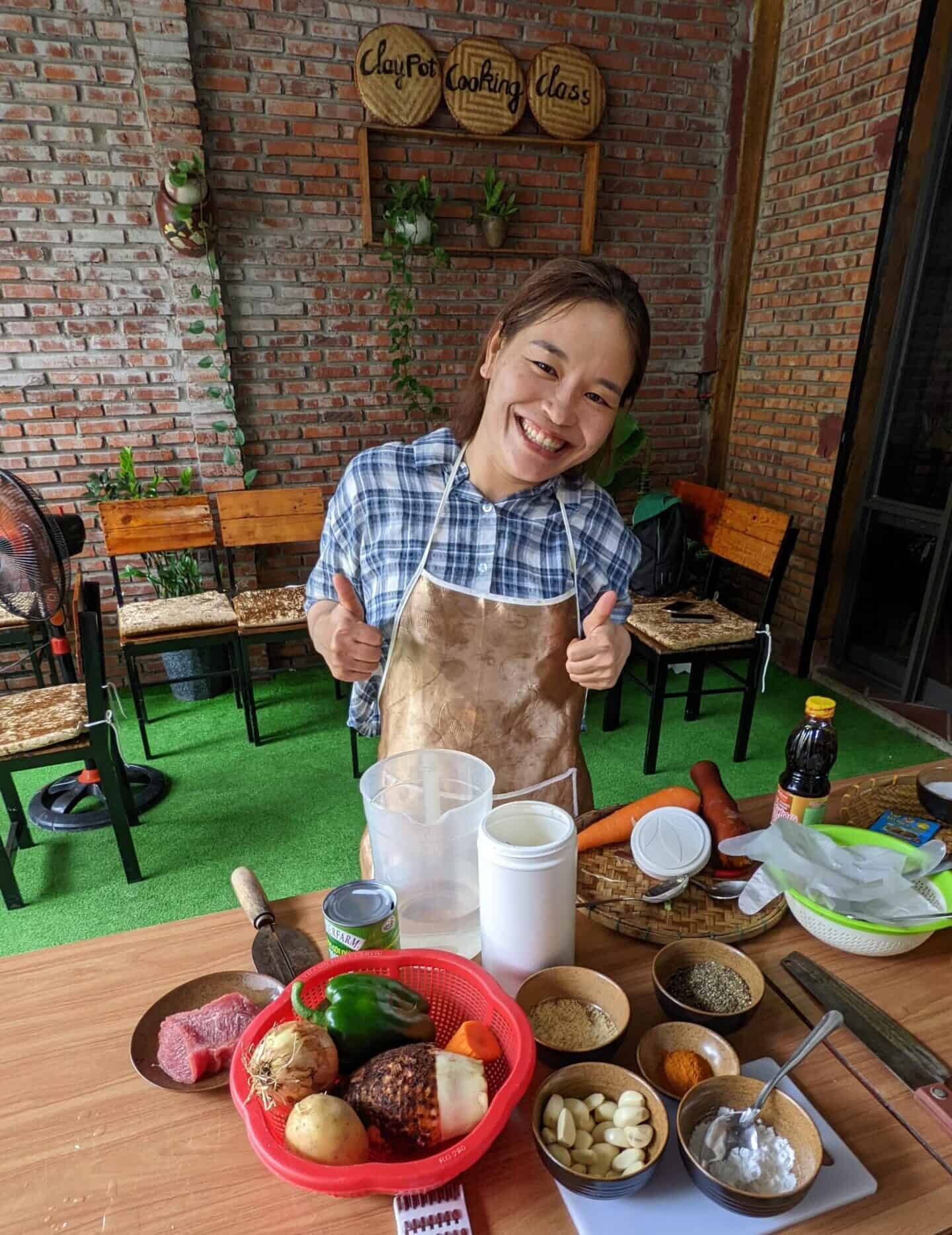
Back at the Claypot restaurant we began cooking. There is no predetermined set of dishes for this class, Trang allowed us to select one appetiser and three main dishes from the restaurant menu for our lesson.
Obviously we chose all of the dishes we had loved during the previous night’s dinner, meaning we not only got to eat all of them again, but we also now have the recipes and know how to cook them at home.
Trang does not offer this class through any of the tour booking websites, only through the Claypot Facebook Page. Cutting out the middle man keeps her prices lower and makes this an essential addition to your Hoi An stay.
Best food tour in Vietnam
One of the best ways for foodies to settle into a new place is to join a good street food tour as soon as possible. It gives you a convenient way to experience the local food culture but also shows you the type of places the local frequent, and that you should look for during your stay.
We intended to join a food tour in each town we visited in Vietnam but after our first experience, we felt comfortable enough to continue the trip finding our own local street food gems.
Bites of Hanoi – StrEat Food Tour
We chose this tour by a combination of reviews and price and it ended up being incredible value for money, and the ideal introduction to Vietnamese street food on our first night in the country.
Hosted by a friendly and knowledgeable young lady named Phuong (or Phoenix), this tour will leave you full of information and great food. At least six dishes and some traditional egg coffee sees to that.
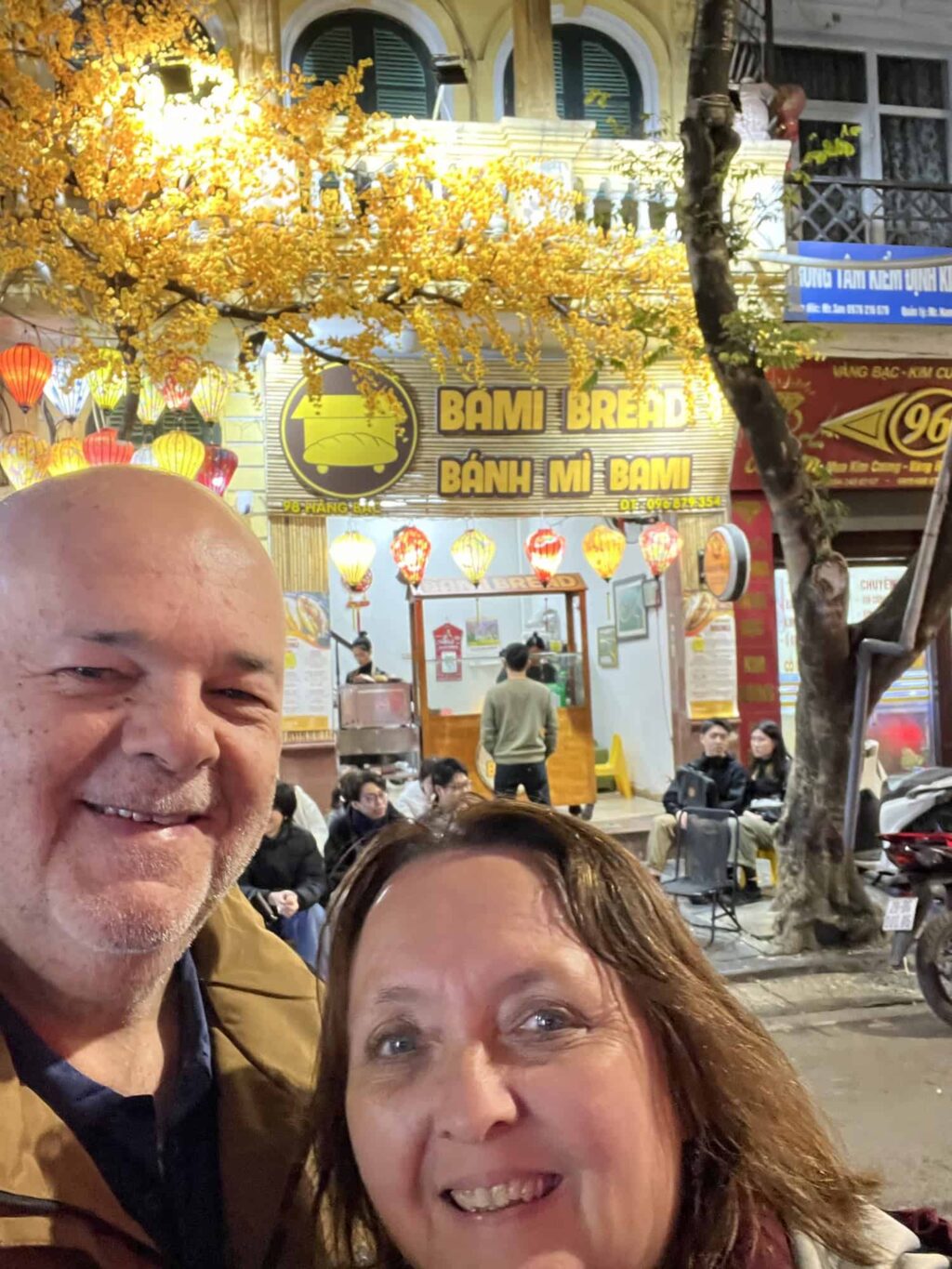
Phuong speaks perfect English and is ready and proud to answer any questions you have about the food or history of Hanoi, and it’s obvious that she knows the street vendors very well from the special service they gave us.
The tour is available through Airbnb Experiences and communication with Phuong through Whatsapp is smooth and efficient. This was an amazing evening and worth way more than the low price of admission.
Is Vietnam worth visiting for foodies?
There is so much on offer to make Vietnam a place you should add to your travel plans, and the food is certainly one of the main reasons. Sometimes considered boring by sections of the internet, we found it to be the opposite.
While the ingredients may be somewhat limited and the use of spices not nearly as extravagant as many other Southeast Asian countries, the Vietnamese have learned to extract maximum taste from basic ingredients.
It is also interesting to experience regional variations on the same dish, to appreciate how local ingredients in each region have been adapted to fit into but modify well-known and popular recipes.
We were pleasantly surprised by the vast majority of our food experiences during our month in Vietnam and wholeheartedly recommend it as a destination for foodies.
Like this post? Please Pin It!
